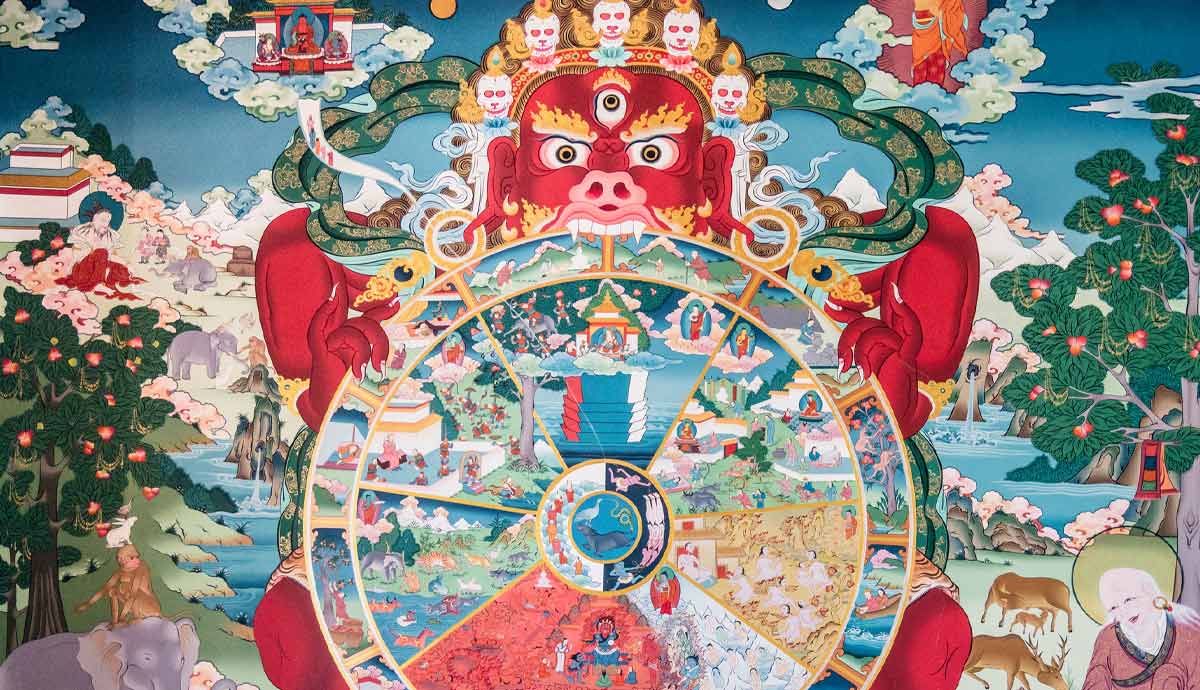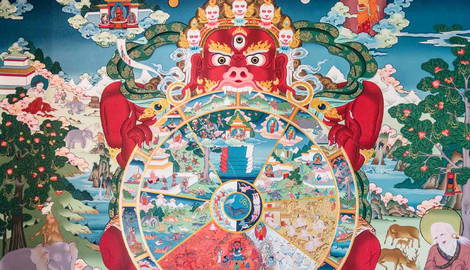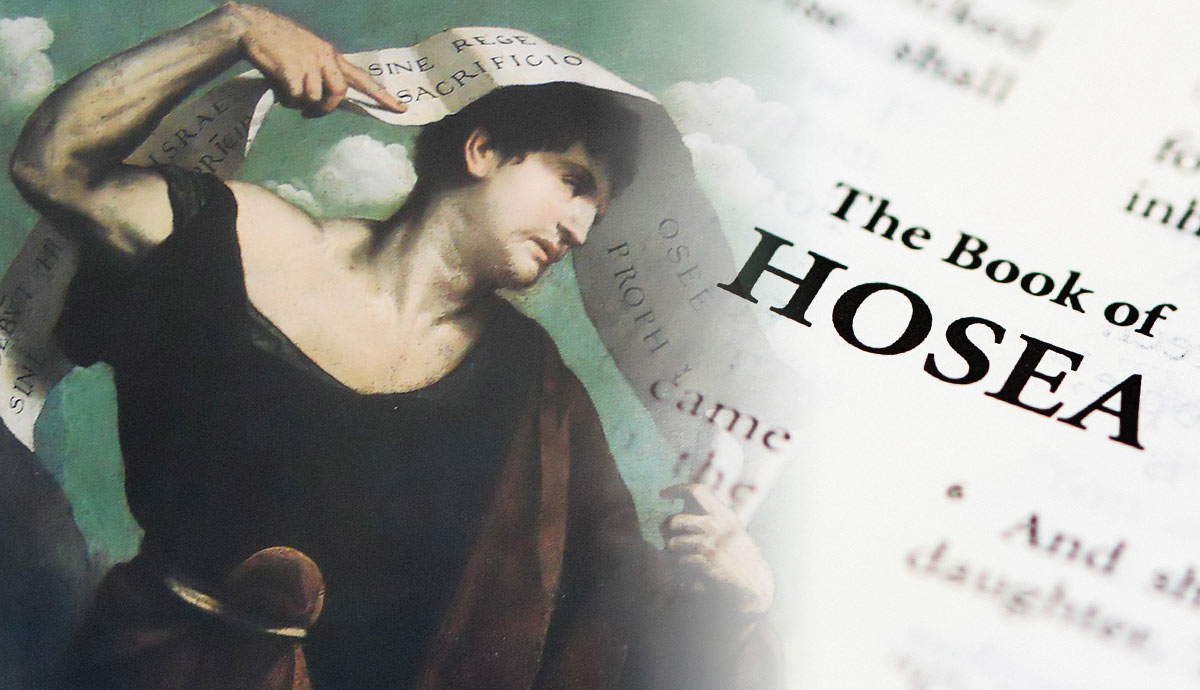
Samsara is the cycle of birth, death, and rebirth. The belief in Samsara is based on the idea that one’s life is determined by how one lived in their previous life. This law is called Karma, and the number of rebirths depends on how good or bad one’s Karma is. The ultimate goal is to reach liberation from Samsara, called moksha. The belief in this reincarnation process is a theological concept present in the Dharmic religions of the Indian Subcontinent, such as Buddhism and Jainism. Samsara represents the passage of time, the cycle of constant and repeated births and deaths, and Karma is its consequence.
Karma: The Reason for Samsara

Karma is Vedic in origin, and once referred to ritualistic actions. Later, with the development of the Upanishads, Karma was extended to mean all human activities and their consequences. Any action leaves an imprint on an individual and the accumulated karma of a lifetime determines our next bodily existence.
Brahmins are born into the highest caste because of their great merit and Shudras are born into the lowest caste to atone for alleged misdeeds. Good karma brings people into the higher castes and therefore a better life, even elevating them to the position of a deva, a superhuman being, or a deity. Bad karma brings a lowly life full of burdens and may also result in being born as an animal or a demon.
Hinduism developed long lists of possible rebirths, recorded in Indian texts like the Manu Smriti. They explain why someone is ill or malformed, or why they enjoy advantages in life. Religious texts, like the Shastras, match particular sins with appropriate atonements one should make during their lifetime, such as fasting, recitations, bathing, etc. This may also include observing feasts honoring a particular deity like Vishnu, Shiva, or others.

Samsara is suffering. People cannot escape it and will experience negative feelings, pain, and a constant desire to overcome such suffering. The answer lies in a focused life where bad Karma is avoided and progress toward Moksha is achieved. This means following the Dharma, a set of principles that describe a moral life explaining which actions should be done to advance one’s karma and achieve progressively better lives in subsequent reincarnation cycles—thus stepping closer to moksha.
Samsara originates from the Hindu philosophy of the transmigration of the soul. It is an eternal cycle of birth, death, and rebirth, whereby the soul moves from body to body. What kind of body—human or animal—will the soul get in the future life? It depends on the quality of your past lives.
An essential aspect of Samsara is the idea that people live in a worldly situation known as Maya: a state of ignorance and an illusionary vision of reality. Maya consists of many false ideas and concepts, a psychological characteristic of the mind that creates images based on past experiences. People use such constructs to create a totally false idea of reality, drawing them away from Moksha and into the traps of Samsara. Maya is sometimes considered our ego, a desire to form relationships with our surroundings based on what Hinduism considers an incorrect interpretation of the world.
Samsara as the Transmigration of Souls

The ancient Vedas are the primary source of knowledge about Samsara and the world where we live. They also account for other worlds and universes in a significantly developed system of Vedic cosmology. This vast system is teeming with eternal souls in non-material form. They are a crucial aspect of the transmigration of souls, a typical Dharmic belief. Souls transmigrate from one body to another, including humans, animals, bacteria, and even those lifeforms we are unaware of.
The Vedas confirm that life occurs as a union of spiritual soul and material body, but a body without a soul is dead, while the soul exists eternally as part of the supreme god. Material existence varies, and the soul can live for a few seconds or thousands of years. These physical bodies are vessels for the soul, which goes through challenges and events that build karma. Through these challenges, Maya arises and puts Samsara into motion. While the soul yearns to be united with the supreme creator, Maya draws it away to physical experience.
According to the Bhagavad Gita, each soul learns its own lesson and is sometimes punished or rewarded for bad or pious deeds during human life. Every act of a human being is done either by the universal law of God or against that law. Only a self-realized soul can completely free itself from karma’s shackles and return to the spiritual world. The Bhagavad Gita further explains how a living entity adopts a particular body type according to its desires.

The subtle body (consisting of the mind, intelligence, and false ego) envelops and covers the soul during the state of transition between death and rebirth, which contains the records of all the thoughts, activities, and desires of the soul in question. These records determine what type of gross body a living being will get in their next life.
Just as in a suit store, we can find many different kinds of jackets, shirts, T-shirts, and pants, similarly, there are 8,400,000 types of existence our souls can choose from. We can choose any of these bodies to satisfy our desires. However, the characteristics of the new body depend on the level of Karma in the previous life. The elements that make up the new body are consciously decided, and the soul migrates to it as soon as it is formed.
Material nature is compelling, and material modes of being force a person to accept another body. This force is observed when a living being moves from a higher body to a lower one. A person who acts uncivilized in their present body will undoubtedly be forced to accept a lower kind of life in the future.
Although a person may enjoy the body of a prominent or famous person, when they realize that they will be forced to accept a body of a lower species of life, they may refuse to leave their present body. In this case, therefore, they may lie in a coma for many days before dying.
Moksha: The End of Samsara

Moksha is a Sanskrit word meaning freedom or liberation. All life yearns to reach moksha. The individual self disappears, and the being is free from all the challenges of the physical world, including all desires and all the consequences of Karma. It means reaching a level of oneness with the divine, the pure essence of being as the universal self or Atman.
Samsara is a process of recognizing the true self, a search for the inner oneness with Brahman, the divine creator. When Atman reaches self-realization, one does not return to a new life but returns to Brahman. This is an essential difference between Hinduism and Buddhism. The latter has the goal of Nirvana, almost complete annihilation of Self, where there is no Brahman to go to. Therefore, Moksha cannot be identified with Nirvana.
The reason for the slow motion of Atman is Maya, the illusion of the particularities of this life, characterized by name, family, job, and social order. To reach awareness, Hinduism suggests a broad scope of activities known as yoga. This includes breathing exercises, physical postures, celibacy, and meditation in a far more comprehensive framework than the usual Western idea of yoga.
Maya binds us to this physical world, and many Hindu scholars and mystics argue that this bondage is the reason for so much suffering. Following dharmic principles and achieving good Karma is the path to Moksha, while yogic practices help us to achieve transcendental experiences where insight into Atman and Brahman is possible.

The liberation of Moksha is not a place. It is not heaven or hell, a physical or spiritual world. It is no-where and no-when. With a materialist worldview, it is sometimes difficult to determine the “position” of Moksha. However, it is better to look at it as a process beginning with the self-realization of Atman.
Centuries of Hindu yogic practice show the way to Moksha. Through yoga, a person liberates oneself from Maya bit by bit, creating more awareness of reality. This process ends with perfect freedom. Yoga is used to remove all concepts and ideas from the mind. Coupled with good Karma and spiritual devotion, yoga teaches the discipline of the mind during which deep inner workings are revealed, and Samsara steadily becomes weaker until it ends in Moksha.










